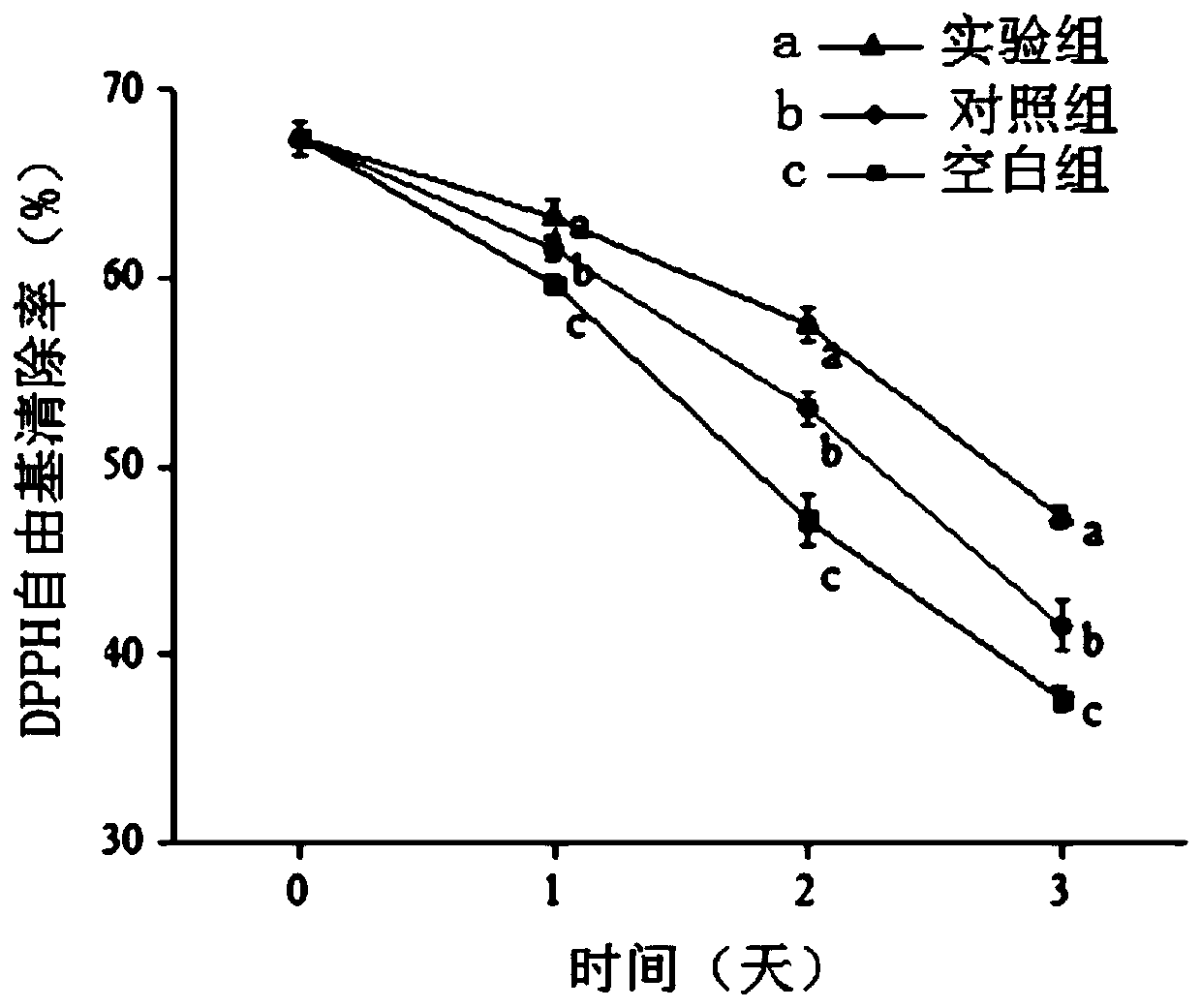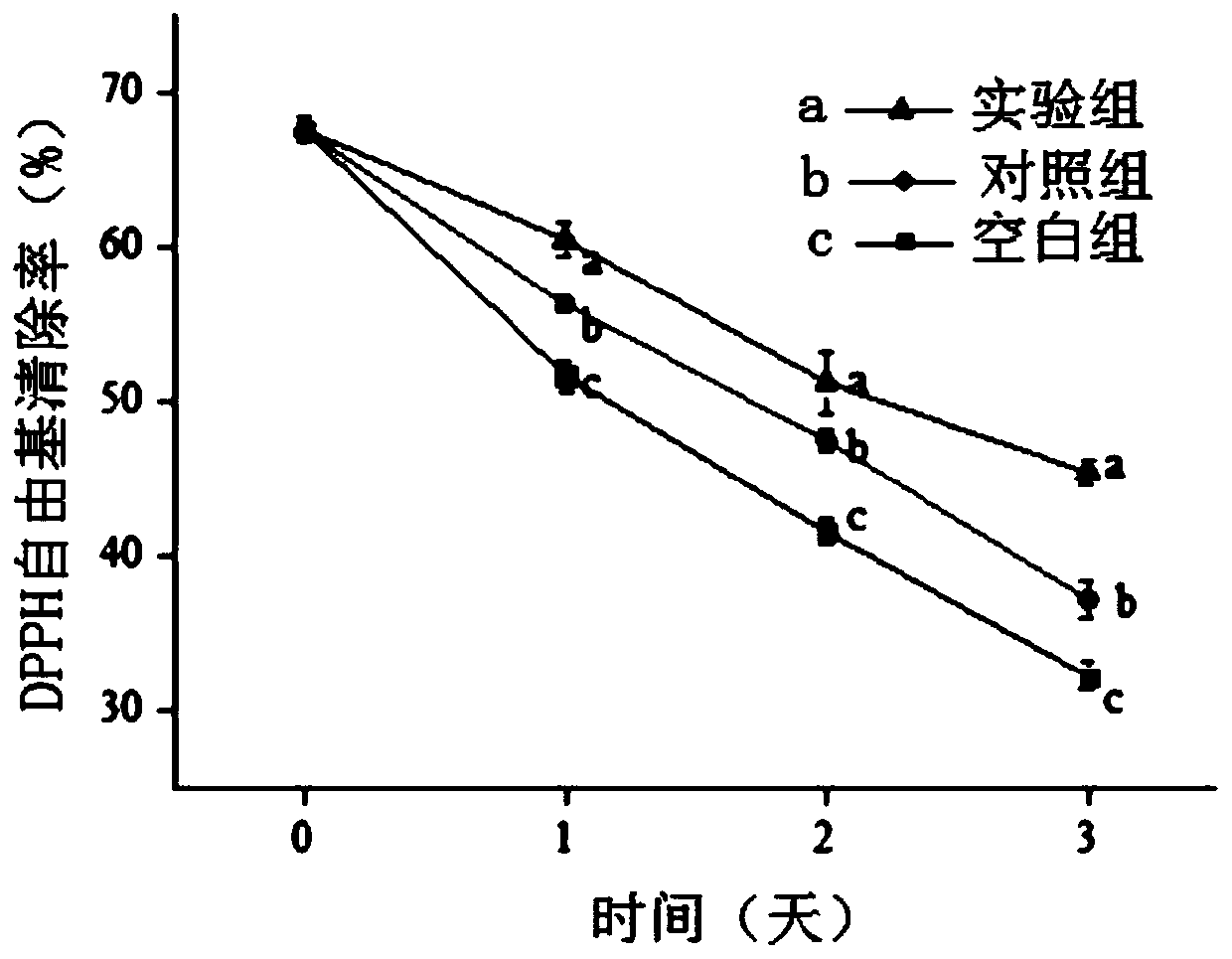Preparation method and application of mulberry leaf polyphenol composite preservative
A composite fresh-keeping, mulberry leaf technology, applied in the application, fruit and vegetable fresh-keeping, food preservation and other directions, to achieve the effects of good water retention, good biocompatibility, and enhanced stability
- Summary
- Abstract
- Description
- Claims
- Application Information
AI Technical Summary
Problems solved by technology
Method used
Image
Examples
Embodiment 1
[0051] The preparation method of the mulberry leaf polyphenol powder in the present embodiment comprises the following steps:
[0052] 1) Preparation of mulberry leaf powder: take fresh mulberry leaves, wash, dry, and pulverize to obtain mulberry leaf powder;
[0053] 2) Rough extraction: add 3 g of mulberry leaf powder to 97 g of ethanol solution with a volume concentration of 70% for ultrasonic extraction, then filter, vacuum concentrate the filtrate, and centrifuge to obtain the mulberry leaf polyphenol concentrate;
[0054] 3) Purification: put the macroporous resin into the chromatographic column, slowly add the mulberry leaf polyphenol concentrate, and then elute with water until the eluate water is clarified to remove water-soluble substances, and then use ethanol with a volume concentration of 60% The aqueous solution is eluted until the eluent is clear, and the eluate is concentrated in vacuum until the total phenol content in the concentrated solution is 18.90±0.207m...
Embodiment 2
[0057] This example detects and analyzes the antioxidant capacity of the mulberry leaf polyphenol composite preservative prepared in Example 1, wherein the antioxidant capacity includes the scavenging activity and reducing capacity of DPPH free radicals.
[0058] The specific operation is as follows: 1) Select the freshly cut Hami melon and divide it into 2*3*3cm Hami melon pieces. The experimental group was as follows: fresh-cut cantaloupe pieces were placed in the mulberry leaf polyphenol composite preservative prepared in Example 1 for 30 seconds to ensure that the mulberry polyphenol composite preservative formed a film on the surface of the cantaloupe pieces but did not form droplets; Then put it on a sieve tray and dry it in a sterile environment, and then pack it in a self-sealing fresh-keeping bag; the packaged fresh-cut Hami melons were stored at 4°C, 25°C and 37°C respectively; the control group was: fresh-cut cantaloupe Cantaloupe piece is placed in the chitosan fil...
Embodiment 3
[0068] In this embodiment, the antibacterial performance of the mulberry leaf polyphenol composite antistaling agent obtained in Example 1 is detected and analyzed, and the method of microbial colony counting is adopted.
[0069] Select fresh-cut cantaloupe and divide it into 2*3*3cm cantaloupe pieces. Wherein, the experimental group is: fresh-cut cantaloupe pieces are placed in the mulberry leaf polyphenol composite antistaling agent solution prepared in Example 1 for 30 seconds to ensure that the mulberry leaf polyphenol composite preservative is formed into a film on the surface of the cantaloupe pieces but does not form droplets. should be taken out, placed on a sieve tray and dried in a sterile environment, and then packed in a self-sealing fresh-keeping bag; the fresh-cut cantaloupe after packaging was stored at 4°C, 25°C and 37°C respectively; the control group was: Place the fresh-cut cantaloupe piece in the chitosan film-forming solution prepared in Example 1 for 30s ...
PUM
 Login to View More
Login to View More Abstract
Description
Claims
Application Information
 Login to View More
Login to View More - R&D
- Intellectual Property
- Life Sciences
- Materials
- Tech Scout
- Unparalleled Data Quality
- Higher Quality Content
- 60% Fewer Hallucinations
Browse by: Latest US Patents, China's latest patents, Technical Efficacy Thesaurus, Application Domain, Technology Topic, Popular Technical Reports.
© 2025 PatSnap. All rights reserved.Legal|Privacy policy|Modern Slavery Act Transparency Statement|Sitemap|About US| Contact US: help@patsnap.com



